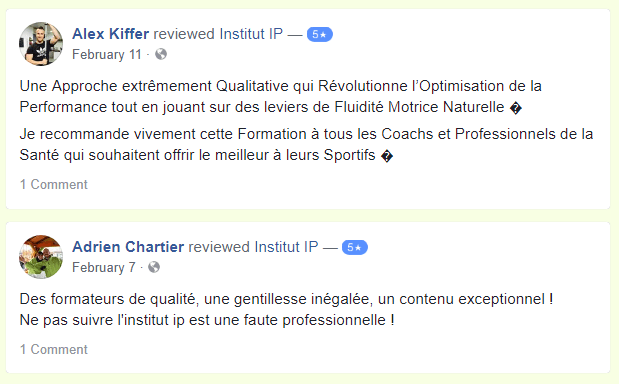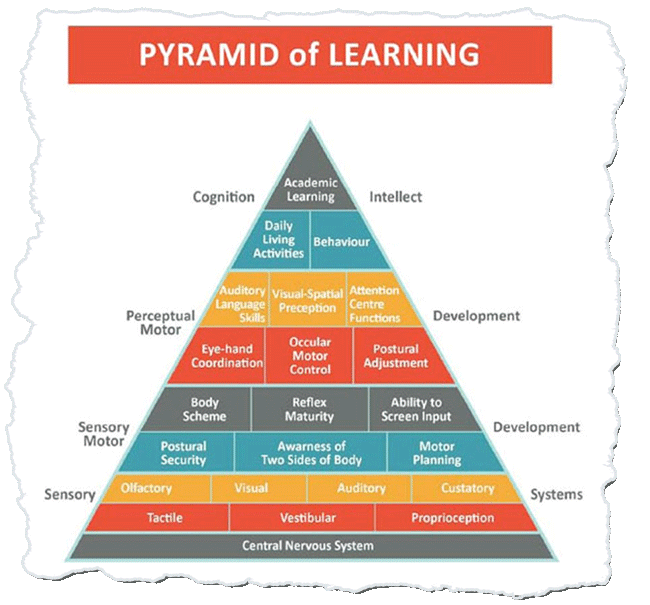

MOTRICITY FOR MOBILITY
how to access muscular chains
If the objective for the trainer or therapist interested in performance is to optimize movement, one has to consider the absolute importance of pre requisites. These pre requisites are of the “sensory” kind. They lead to motor output!
It is between the ages of 0 to 7 that we gain access to our loco motor system.
Is it possible that there were mishaps?
How shall we assess them? How do we improve them?
That is what the IP Method is all about!
PYRAMID OF LEARNING
At IP Institute, we use as an analysis model of the central nervous system, the Learning Pyramid of Williams and Shellenberger (1996).
This interpretation model will guide us along as we assess sensory and motor competencies that are at the root of performance, on both a quantitative and qualitative level.
The IP Certification will allow the practitioner to target specific challenges and, as such, optimize performance… with a capital P!

Team Building !
COURSE 1: MOTOR PATTERNS 1
SENSORY STAGE (1) AND SENSORIMOTOR STAGE (2)
Most students at the IP Institute have studied anatomy, physiology and biomechanics. What has often not been covered is how an individual gains access to the movement.
Intervening in such a way as to optimize the connection between the brain and the muscular chains, at the level of the sensory and sensory-motor sphere, is the goal of course 1.
Course 1 will allow the professional to:
- Question classical education
- Study sensory and motor development
- Intervene at the #tactile, #proprioception, #vestibular, and #visual levels
- Intervene at the level of #motor planning, #recognition of both sides of the body, and #postural security
- Revise the notion of static stretching
- Take a renewed look at the motor patterns in relation to the cranial nerves
- In all, more than 30 exercises, including 4 for the ocular sphere, taught to be suggested to clients in a logical order, exclusive to the IP method
COURSE 2: MOTOR PATTERNS 2
PERCEPTUAL-MOTOR STAGE (3) AND COGNITIVE STAGE (4)
If Course 1 is an introduction to motor development, Course 2 is a continuation of this learning, with an emphasis on motor performance.
A distinction is made here between motor health and physical health, namely that motor health is the basis of physical health.
Motor skills are defined: locomotion and manipulation.
Course 2 teaches movement to achieve a specific goal. This is the perceptual-motor stage.
Course 2 will allow the professional to:
- Revise the learnings of course 1
- Differentiate between motor and physical health
- Intervene at the level of motor skills like #eye-hand coordination, #postural adjustment, #activities of daily living (sports performance)
- Deepen the understanding of the vestibular system in relation to the stress response, cognition, and emotions
- Deepen the appreciation for the cerebellum and learn applications for its 3 components
- Study joint mobility in relation to motor patterns and primitive reflexes
- Study Piaget’s development model
- In total, more than 30 exercises, including 6 for the ocular sphere, taught to be suggested to clients in a logical order, exclusive to the IP method
- Full training manual
-
20 hours of Training over 10 evenings,
from 7 to 9pm EST - Course 1 students get a Neurospike® Ball
- Certificate of Course Completion
- Your professional profile on the Institute's member directory (coming soon)





